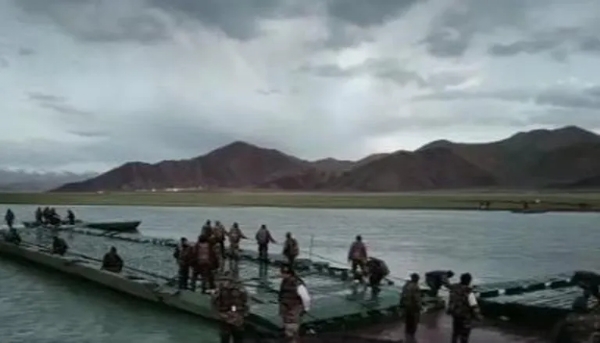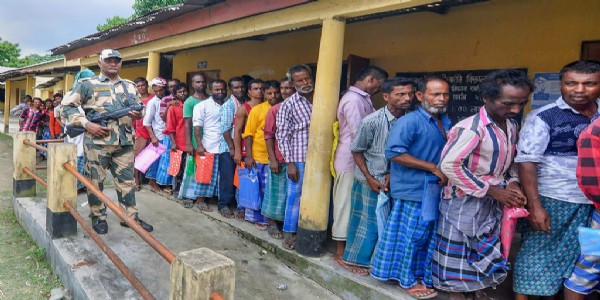Indians witness another engineering marvel of the Indian army, built across Indus in Ladakh
The drill was carried out by the Sapta Shakti Engineers of the Indian Army in Eastern Ladakh. The building of the bridge included carrying out mobility tasks and training.
Total Views | 204
New Delhi, Sept 12: Impressive engineering skills of the Indian Army came to the fore on Sunday (Sept 11) after a video depicted the troops constructing a bridge across the Indus river. The video titled 'Bridging Challenges - No Terrain nor Altitude Insurmountable' was shared on Twitter by the South Western Command of the Indian Army.

The drill was carried out by the Sapta Shakti Engineers in Eastern Ladakh. The building of the bridge included carrying out mobility tasks and training. "Bridging Challenges - No Terrain nor Altitude Insurmoutable' shows Sapta Shakti Engineers in Eastern Ladakh carrying out mobility tasks and training. Bridging the mighty Indus River, enabling movement of both combat and logistic echelons," tweeted South Western Command of the Indian Army.
Also read:
Major Breakthrough! Indian, Chinese troops begin disengagement from Gogra-Hot Springs (PP-15)
The video depicts the mechanical launch of heavy metal parts into the waterbody as the bridge is shown to be completed at the end of the video. Army personnel engrossed in teamwork can be seen in the exercise while heavy trucks cross the terrain after the bridge has been completed. Earlier on Sunday (Sept 11), the Indian Army chief General Manoj Pande, who is on a two-day visit to the Ladakh sector, flew in an Indian Air Force Apache attack helicopter. The request for a sortie from the Ladakh air base was received yesterday and today, the Army chief flew in the chopper over the area, IAF officials said.
General Manoj Pande was familiarized with the flying characteristics of the platform and briefed about its capabilities and roles, they said. The Apache has been deployed in the Ladakh sector since the beginning of the military standoff with China along the Line of Actual Control in eastern Ladakh. The Indian Air Force has 22 of these American-origin attack helicopters while the Indian Army is soon going to get six of its own.
Indian Army teams were also in the US for training purposes led by the Director General of Army Aviation himself. However, the mainstay of the Army in the future would be the indigenous Light Combat Helicopter being developed by the HAL.






